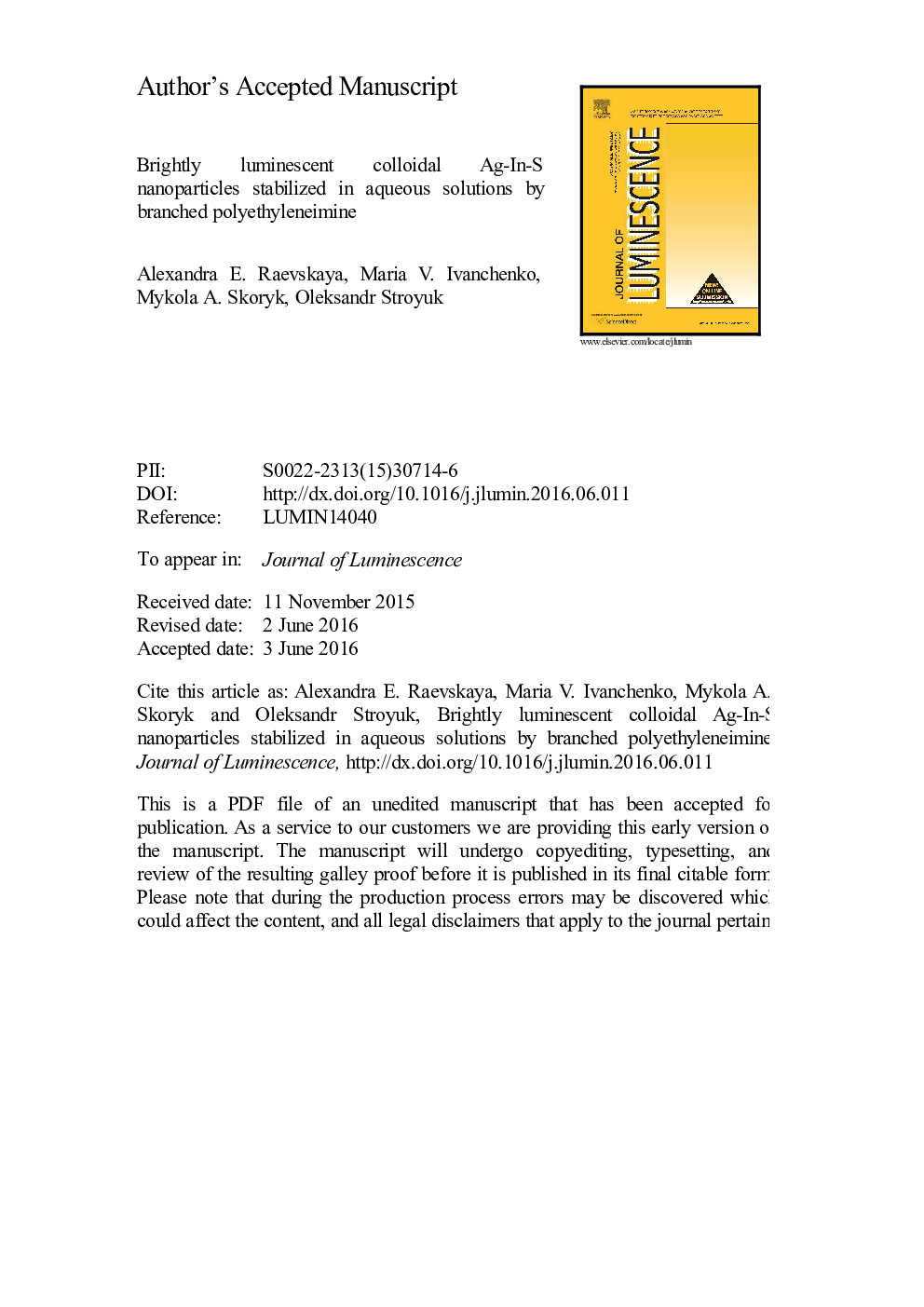| Article ID | Journal | Published Year | Pages | File Type |
|---|---|---|---|---|
| 5398424 | Journal of Luminescence | 2016 | 18 Pages |
Abstract
Silver indium sulfide nanoparticles (NPs) stabilized in water by branched polyethyleneimine (PEI) were produced by a mild and direct synthesis. The Ag-In-S NPs exhibit relatively bright photoluminescence (PL) in the visible spectral range. The key parameters influencing color and intensity of PL are the Ag:In and Ag:S molar ratios and duration of the post-synthesis thermal treatment at ~100 °C. A maximal PL quantum yield, 20%, was observed for the Ag-In-S-PEI NPs produced at a molar Ag:In:S ratio of 1:5:5 and a thermal treatment at ~100 °C for 2 h. Such NPs are characterized by an average hydrodynamic size of around 100 nm. According to SEM each 100-nm globule comprises many smaller Ag-In-S NPs. Reasonably high PL quantum yield, variability of the emission color and self-aggregation of Ag-In-S-PEI NPs into polymer globules that do not scatter light makes such NPs promising for the luminescent bio-labeling applications. The PL band maximum energy of the Ag-In-S-PEI NPs produced in optimal conditions is very close to the band gap derived from the absorption spectra of colloidal solutions indicating that PL originates from the radiative recombination of delocalized or shallowly trapped charge carriers.
Keywords
Related Topics
Physical Sciences and Engineering
Chemistry
Physical and Theoretical Chemistry
Authors
Alexandra E. Raevskaya, Maria V. Ivanchenko, Mykola A. Skoryk, Oleksandr L. Stroyuk,
